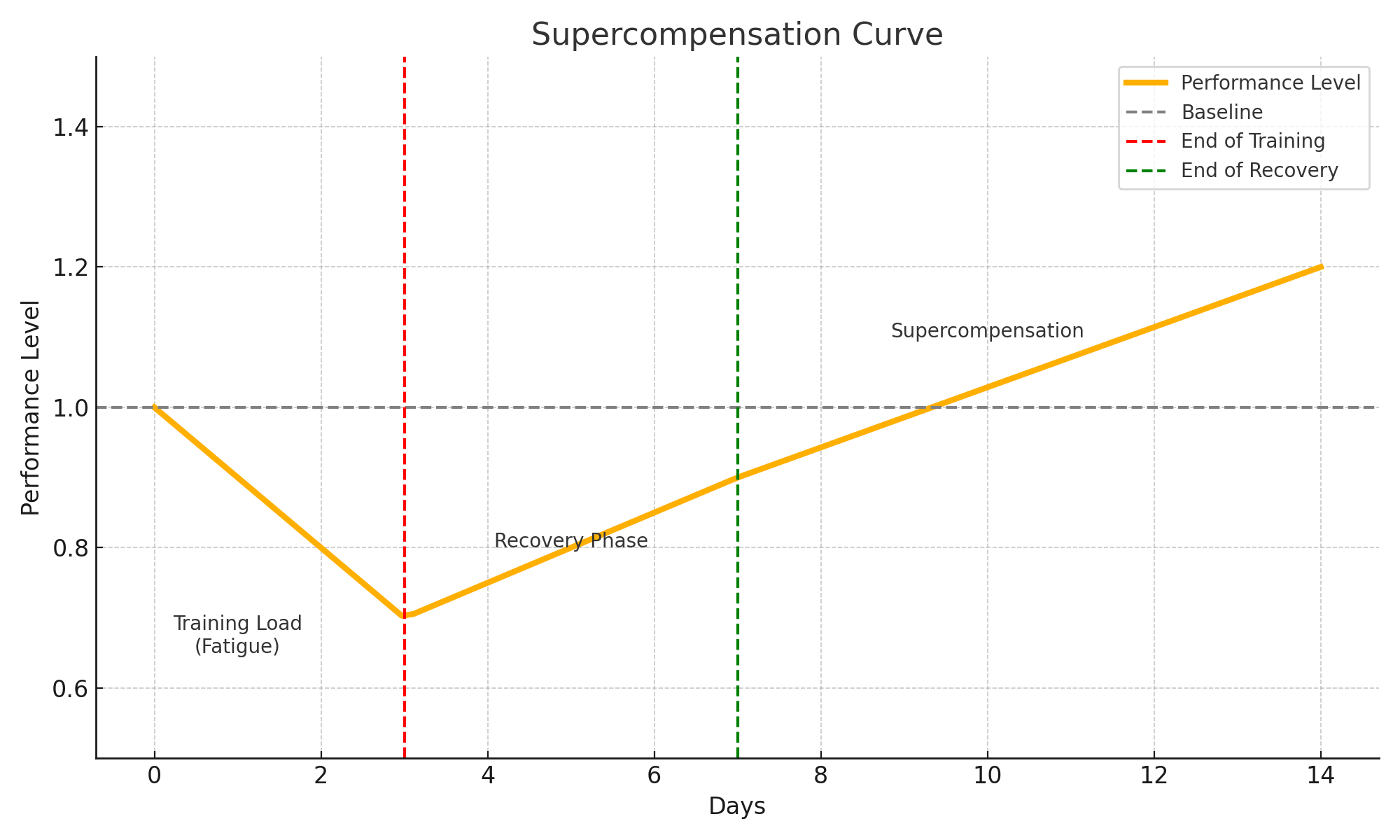Deload Week vs. Recovery Week: What’s the Difference, and When to Use Each
You’ve probably heard both terms before—deload and recovery week—but they’re not interchangeable. Each plays a distinct role in your training strategy, and knowing when to use them can be the difference between burnout and breakthrough.
🔄 Deload Week = Reduced Load, Same Structure
A deload week is a short-term reduction in training load while keeping your normal structure and routine. You’ll still train most days, but with lighter intensity, lower volume, or both. It’s not rest—it’s strategic moderation.
The goal?
To reduce accumulated fatigue while maintaining adaptations and momentum.
Why it works:
After several weeks of progressive overload, your body enters a phase of elevated fatigue. A well-timed deload allows for supercompensation—the process where your body adapts to prior stress and rebounds stronger.
✅ Keeps you engaged and moving
✅ Prevents plateau or overtraining
✅ Ideal every 3–5 weeks or between training blocks
🛌 Recovery Week = Full System Reset
A recovery week focuses more on complete restoration—both physically and mentally. It typically includes drastically reduced volume, unstructured movement, rest days, and sometimes full days off the bike.
The Goal?
To provide a full-system reset when you’re deep in the red or transitioning between big phases.
✅ Great after a peak race or heavy block
✅ Helps prevent overtraining and mental burnout
✅ Useful during high life stress, illness, or travel
When to Use Each
1) You’re finishing a hard training block and want to stay in rhythm — deload week
2) You’re mentally or physically exhausted — recovery week
3) You’ve just completed a race or peak event — recovery week
4) You’re transitioning between structured blocks — Either—depends on fatigue level
5) You want to keep fitness gains while reducing load — deload week
TL;DR
Deload = Scaled-back training, same structure. Great for managing fatigue and maintaining rhythm.
Recovery = Big-picture reset. Best when you need a break—mentally or physically.
Both types of rest have a place in a smart, sustainable training plan. The key is recognizing what kind of recovery your body actually needs.
Want to Get More Out of Your Training?
At Mach1 Performance, we don’t just coach workouts—we build recovery into your plan with the same precision as intervals and volume. Want help personalizing your rest strategy? Let’s talk.

